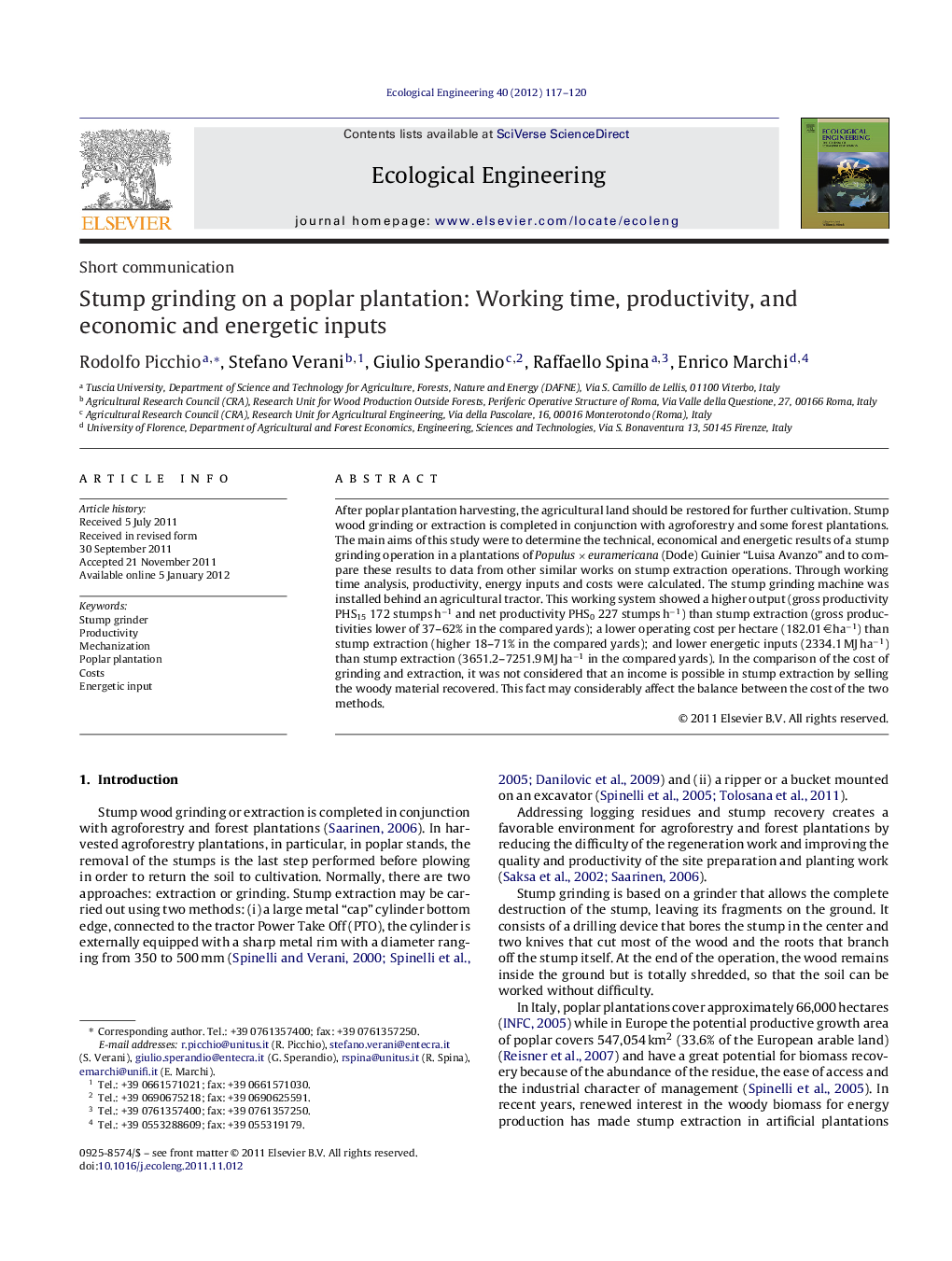| Article ID | Journal | Published Year | Pages | File Type |
|---|---|---|---|---|
| 4389957 | Ecological Engineering | 2012 | 4 Pages |
After poplar plantation harvesting, the agricultural land should be restored for further cultivation. Stump wood grinding or extraction is completed in conjunction with agroforestry and some forest plantations. The main aims of this study were to determine the technical, economical and energetic results of a stump grinding operation in a plantations of Populus × euramericana (Dode) Guinier “Luisa Avanzo” and to compare these results to data from other similar works on stump extraction operations. Through working time analysis, productivity, energy inputs and costs were calculated. The stump grinding machine was installed behind an agricultural tractor. This working system showed a higher output (gross productivity PHS15 172 stumps h−1 and net productivity PHS0 227 stumps h−1) than stump extraction (gross productivities lower of 37–62% in the compared yards); a lower operating cost per hectare (182.01 € ha−1) than stump extraction (higher 18–71% in the compared yards); and lower energetic inputs (2334.1 MJ ha−1) than stump extraction (3651.2–7251.9 MJ ha−1 in the compared yards). In the comparison of the cost of grinding and extraction, it was not considered that an income is possible in stump extraction by selling the woody material recovered. This fact may considerably affect the balance between the cost of the two methods.
► Stump grinding effects after poplar plantation harvesting were analyzed. ► The parameters analyzed were: working time, productivity, energy inputs and costs. ► The stump grinder use is particularly advisable. ► The retention of harvest residue can increase the soil carbon accumulation.
